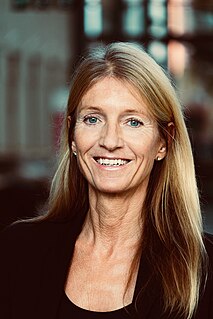Related Research Articles

Intellectual property (IP) is a category of property that includes intangible creations of the human intellect. There are many types of intellectual property, and some countries recognize more than others. The best-known types are copyrights, patents, trademarks, and trade secrets. The modern concept of intellectual property developed in England in the 17th and 18th centuries. The term "intellectual property" began to be used in the 19th century, though it was not until the late 20th century that intellectual property became commonplace in the majority of the world's legal systems.

The World Intellectual Property Organization is one of the 15 specialized agencies of the United Nations (UN). Pursuant to the 1967 Convention Establishing the World Intellectual Property Organization, WIPO was created to promote and protect intellectual property (IP) across the world by cooperating with countries as well as international organizations. It began operations on 26 April 1970 when the convention entered into force. The current Director General is Singaporean Daren Tang, former head of the Intellectual Property Office of Singapore, who began his term on 1 October 2020.

Knowledge transfer refers to sharing or disseminating of knowledge and providing inputs to problem solving. In organizational theory, knowledge transfer is the practical problem of transferring knowledge from one part of the organization to another. Like knowledge management, knowledge transfer seeks to organize, create, capture or distribute knowledge and ensure its availability for future users. It is considered to be more than just a communication problem. If it were merely that, then a memorandum, an e-mail or a meeting would accomplish the knowledge transfer. Knowledge transfer is more complex because:
Technology transfer (TT), also called transfer of technology (TOT), is the process of transferring (disseminating) technology from the person or organization that owns or holds it to another person or organization, in an attempt to transform inventions and scientific outcomes into new products and services that benefit society. Technology transfer is closely related to knowledge transfer.
The concept of the innovation system stresses that the flow of technology and information among people, enterprises, and institutions is key to an innovative process. It contains the interactions between the actors needed in order to turn an idea into a process, product, or service on the market.
Open innovation is a term used to promote an information age mindset toward innovation that runs counter to the secrecy and silo mentality of traditional corporate research labs. The benefits and driving forces behind increased openness have been noted and discussed as far back as the 1960s, especially as it pertains to interfirm cooperation in R&D. Use of the term 'open innovation' in reference to the increasing embrace of external cooperation in a complex world has been promoted in particular by Henry Chesbrough, adjunct professor and faculty director of the Center for Open Innovation of the Haas School of Business at the University of California, and Maire Tecnimont Chair of Open Innovation at Luiss.
Collaborative innovation is a process in which multiple players contribute towards creating new products with customers and suppliers.

The technology life-cycle (TLC) describes the commercial gain of a product through the expense of research and development phase, and the financial return during its "vital life". Some technologies, such as steel, paper or cement manufacturing, have a long lifespan while in other cases, such as electronic or pharmaceutical products, the lifespan may be quite short.
The following outline is provided as an overview of and topical guide to intellectual property:
Innovation management is a combination of the management of innovation processes, and change management. It refers to product, business process, marketing and organizational innovation. Innovation management is the subject of ISO 56000 series standards being developed by ISO TC 279.
The Intellectual Property Issues in Cultural Heritage (IPinCH) Project is a seven-year international research initiative based at Simon Fraser University, in British Columbia, Canada. IPinCH's work explores the rights, values, and responsibilities of material culture, cultural knowledge, and the practice of heritage research. The project is directed by Dr. George P. Nicholas, co-developed with Julie Hollowell and Kelly Bannister and is funded by the Social Sciences and Humanities Research Council of Canada's (SSHRC) major collaborative research initiatives (MCRI) program.

Oxford University Innovation Limited (OUI) is a British technology transfer and consultancy company created to manage the research and development (R&D) of University spin-offs. OUI is a wholly owned subsidiary of the University of Oxford, and is located on Botley Road, Oxford, England. OUI was previously known as Isis Innovation (1988–2016) and Oxford University Research and Development Ltd (1987–1988).
Patent monetization refers to the generation of revenue or the attempt to generate revenue by a person or company by selling or licensing the patents it owns. According to a 2006 survey of patent owners at the European Patent Office, about half of small and medium-sized enterprises (SMEs) take patents for monetary reasons.
Keith Daniel Bergelt is an American corporate executive and former U.S. diplomat. He is CEO of Open Invention Network where he is responsible for coordinating the establishment and maintenance of a patent ‘‘no-fly” zone around Linux. As such, he is responsible for safeguarding an open and competitive landscape in key technology markets such as back-office transaction processing, mission critical IT applications, mobile communications/smartphones, and desktop computing.
University spin-offs are companies that transform technological inventions developed from university research that are likely to remain unexploited otherwise. They are a subcategory of research spin-offs. Prominent examples of university spin-offs are Genentech, Crucell, Lycos and Plastic Logic. In most countries, universities can claim the intellectual property (IP) rights on technologies developed in their laboratories. In the United States, the Bayh–Dole Act permits universities to pursue ownership of inventions made by researchers at their institutions using funding from the federal government, where previously federal research funding contracts and grants obligated inventors to assign the resulting IP to the government. This IP typically draws on patents or, in exceptional cases, copyrights. Therefore, the process of establishing the spin-off as a new corporation involves transferring the IP to the new corporation or giving the latter a license on this IP. Most research universities now have Technology Licensing Offices (TLOs) to facilitate and pursue such opportunities.

In R&D management and systems development, open coopetition or open-coopetition is a neologism to describe cooperation among competitors in the open-source arena. The term was first coined by the scholars Jose Teixeira and Tingting Lin to describe how rival firms that, while competing with similar products in the same markets, cooperate which each other in the development of open-source projects in the co-development of Webkit).

Sofia Börjesson is a Swedish Professor (chair) in Technology Management Department at Chalmers University of Technology in Gothenburg Sweden. Her academic research field evolves around questions of how large, mature organizations change and develop with focus on the management of innovation work. She works on applying innovation as an organizational transformation and in particular in a context of business model innovation. She applies qualitative methods, often collaborative research methods cooperating with industrial partners with the intent to create actionable knowledge. She has published her work in journals such as R&D Management, Journal of Change Management, Int. J. Operations and Production Management, Technovation and Creativity and Innovation Management.
Open source is source code that is made freely available for possible modification and redistribution. Products include permission to use the source code, design documents, or content of the product. The open-source model is a decentralized software development model that encourages open collaboration. A main principle of open-source software development is peer production, with products such as source code, blueprints, and documentation freely available to the public. The open-source movement in software began as a response to the limitations of proprietary code. The model is used for projects such as in open-source appropriate technology, and open-source drug discovery.

WIPO GREEN is a World Intellectual Property Organization program that supports global efforts to address climate change and food security through sharing of sustainable technology innovations. Established in 2013, WIPO GREEN is a free online marketplace for technology exchange connecting providers and seekers of inventions and innovations in environmental technology. Through various services such as the database, network, and projects, WIPO GREEN acts as platform for innovators, small and medium enterprises, Fortune 500 companies, and other key stakeholders to catalyze green technology innovation and maximize diffusion with the help of intellectual property rights. Under the management of WIPO’s Global Challenges Division, WIPO GREEN consists of three main elements: 1) the online database of sustainable technologies uploads and needs, 2) Acceleration Projects, and 3) the WIPO GREEN partners network.
An intellectual property policy comprises the policies and procedures set up by a company, a state, or an institution that relate to creating, using or disseminating intellectual property. The purpose of the intellectual property policy is to foster the creation and dissemination of knowledge and to provide certainty in individual and institutional rights associated with ownership and with the distribution of benefits that may be derived from the creation of intellectual property.
References
- ↑ Ove Granstrand (2001). IPR (Intellectual Property Rights) Aspects of Internet Collaborations (Report). European Commission. Retrieved 16 February 2017.
- ↑ Granstrand, Ove; Holgersson, Marcus (2014). "The challenge of closing open innovation: The intellectual property disassembly problem". Research-Technology Management. 57 (5): 19–25. doi:10.5437/08956308X5705258. S2CID 154502366.